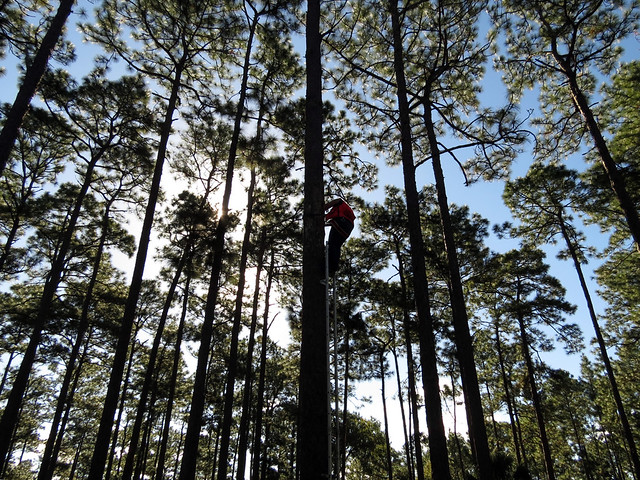On Friday, September 28, Arthur and I attended a field trip at the Clearwater Recreation Area of Ocala National Forest. The trip, part of the inaugural Wings & Wildflowers Festival, was to look for Red-cockaded Woodpeckers and learn about how biologists study and conserve this endangered species.
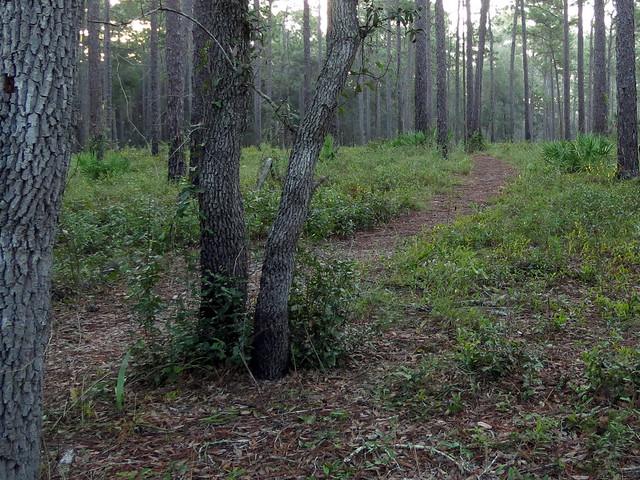
A part of The Florida Trail that crosses into Ocala National Forest
We began our walk out to a Red-cockaded Woodpecker (RCWO) “cluster” just after sunrise. Along the way, trip co-leader Monica Folk told our group about RCWO ecology, family groups, and nesting behavior.
RCWOs are somewhat unique in that they are cooperative nesters. Just about 8% of bird species are known to be. Cooperative nesting means that offspring from previous nesting seasons may stay close to their parents and help raise subsequent broods. Young females are usually the first to branch out from the extended family, much like Florida Scrub-Jays (also cooperative nesters, also endangered).
RCWOs are also unique in that they are the only species of woodpecker to make their cavities in living pine trees. The birds roost in individual cavities at night, so a family group consisting of 4 birds should normally have at least four cavities within its territory (the cluster). The males excavate the cavities and it takes up to four years to complete one cavity. Active cavity trees can be identified by small holes bored around the cavity entrance. RCWOs create these little wells which cause the tree to exude resin; the resin helps protect the cavity from predatory rat snakes.
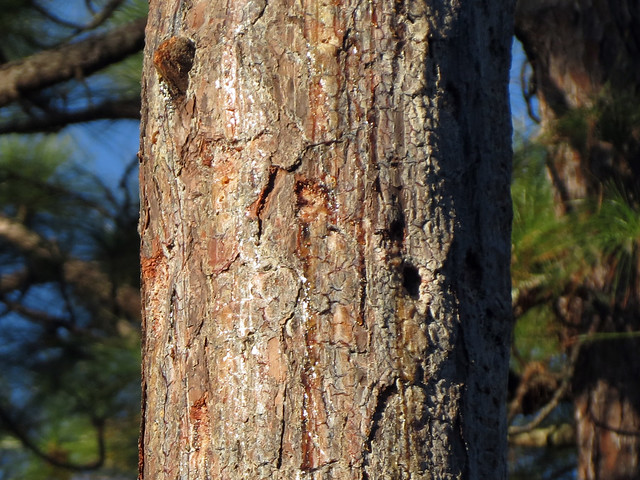
Shiny resin
RCWOs have a lot of other specific habitat requirements in order to successfully nest. The type of vegetation found in the ground cover, wildfires and forest rejuvenation, and even tree fungus (!) are just a few things that come into play.
Red-cockaded Woodpeckers like to nest in the same kind of trees humans cut for timber on a mass scale in the last 150+ years. Habitat loss has resulted in the RCWO population currently estimated to be 12,500 individuals, which is about 1% of its original population.
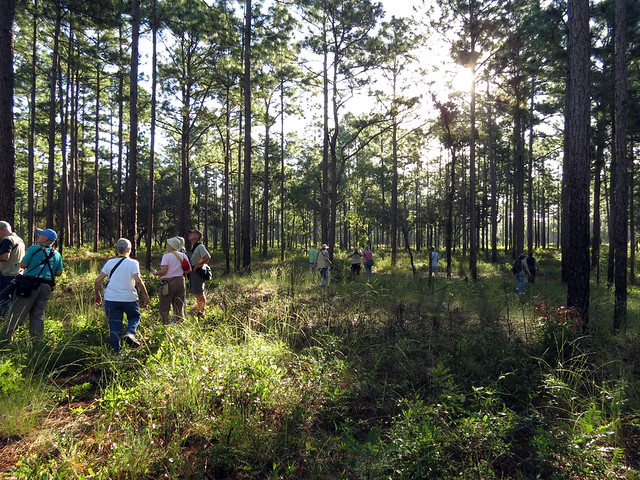
Looking for RCWOs in suitable habitat
Biologists are helping RCWOs by preserving suitable habitat and identifying potential future habitat, and by introducing birds into areas fitted with artificial nest cavities (more about those in an upcoming post). Our walk brought us to an area fitted with a few artificial cavities where a lone male was known to live. The male was associating with a female who was thought to roost elsewhere (a commuter!). So when we came upon at least three individuals actively feeding at the cluster, it came as somewhat of a surprise. One of the birds was clearly exhibiting the begging behavior of a juvenile, indicating nesting success at the site.
The sun was behind the birds as we watched them, but I managed to take a few record shots. Our binocular views were much better; we were able to drink in this new life bird.
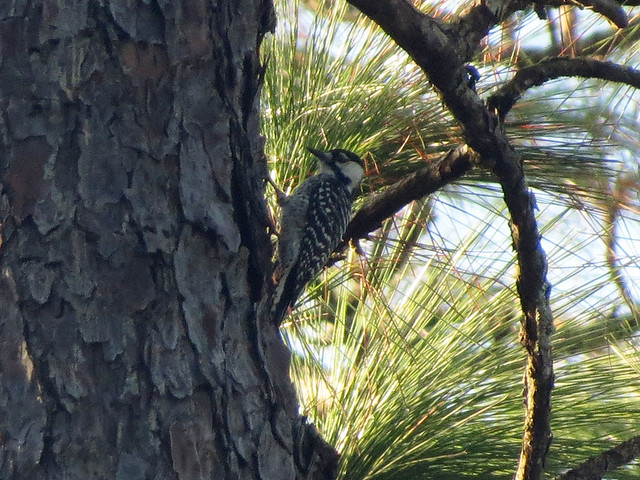
Red-cockaded Woodpecker
The below video isn’t in focus but you can see two RCWOs scooting upwards, with debris from a third bird falling below. They move around the trees, tearing off pieces of bark to find insects below. We were watching them have breakfast. Listen to their cute squeaky toy call, too.
In my next post I’ll share some of what we learned about how biologists establish new clusters and monitor the birds. Hint: some of it involves really tall ladders!
